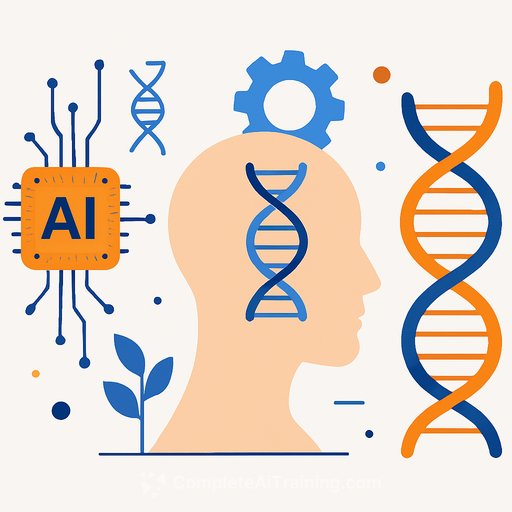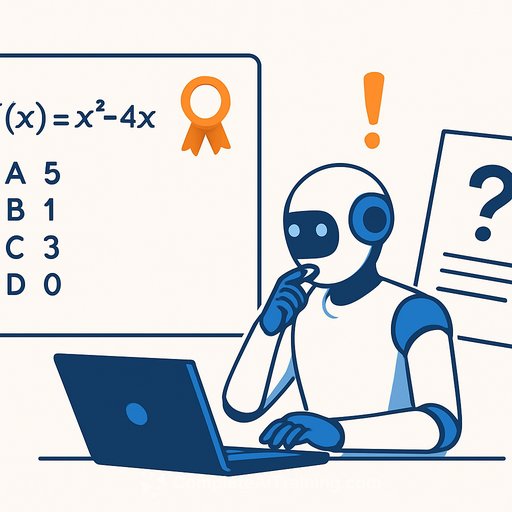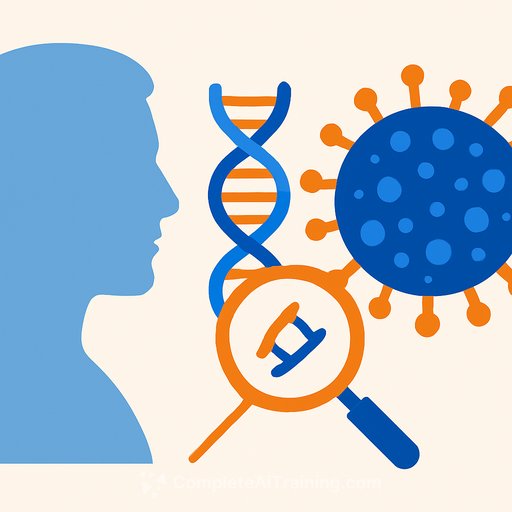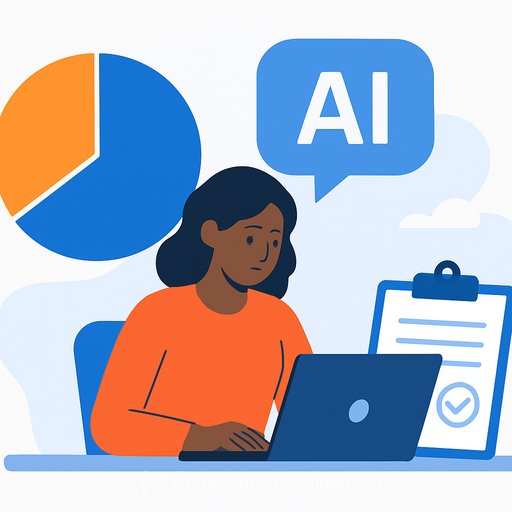Innovation AI: What Can Epigenetics Do-and How Is AI Involved?
Aging touches everyone, which makes progress here universally relevant. Epigenetics offers a practical path: change gene activity without changing the DNA code. Paired with AI, researchers are turning messy biological signals into testable hypotheses and early-stage interventions.
Epigenetics, in brief
Epigenetics refers to chemical tags-like DNA methylation-that turn genes on or off. Over time, these tags drift, and cells lose their "youthful" settings. Many age-related diseases correlate with that drift, not just damage itself.
Idea worth tracking: If we can restore youthful epigenetic settings, cells may regain repair capacity. That's the thesis behind several landmark studies.
The Welwitschia signal
Welwitschia mirabilis, a desert plant that can live for millennia, uses methylation to silence "jumping genes" (retrotransposons) that can trigger inflammation and other problems. Its stability over centuries is an extreme case study in epigenome control.
The takeaway isn't that humans are plants. It's that long-lived organisms often keep their epigenome quiet and consistent. That principle is inspiring human research.
Resetting age: from nuclear transfer to partial reprogramming
Decades ago, nuclear transfer showed that an adult cell's nucleus can be reset to a youthful state. Later, Shinya Yamanaka's work on induced pluripotent stem cells (iPSCs) revealed a set of four genes-commonly called Yamanaka factors-that can reprogram adult cells back to a young, flexible state. See the Nobel overview for context: 2012 Nobel Prize in Physiology or Medicine.
Full reprogramming in a living organism is risky-it can turn cells too plastic. But cyclic, partial reprogramming in mice has shown promise: brief pulses of Yamanaka factor expression improved health markers and extended lifespan in progeroid models. A good summary is here: Salk Institute (2016): partial reprogramming study.
As one researcher put it, "If you can give something, you can take it away," pointing to evidence that epigenetic age can be pushed in both directions-at least in animal models. Human studies will depend on safety, delivery, and regulation.
Where AI fits right now
- Literature-to-hypothesis: Large language models condense thousands of papers into short, testable ideas and experimental designs.
- Multi-omics modeling: Deep learning integrates methylation, transcriptomics, proteomics, and imaging to predict which epigenetic levers matter for a given tissue and disease stage.
- Intervention design: Models help select targets (e.g., methylation sites, chromatin regulators), optimize dosing schedules for partial reprogramming, and simulate off-target effects.
- Biomarkers: Improved epigenetic clocks estimate biological age and rejuvenation response across tissues, enabling shorter, cheaper studies.
- Delivery and safety: AI aids vector design, guide selection, and risk scoring for gene therapies and small molecules that modulate epigenetic marks.
What this means for science and clinical translation
Short term: Better biomarkers and models that prioritize interventions with the highest likelihood of benefit and lowest risk. Expect more rodent and large-animal studies using cyclic reprogramming and methylation editing.
Medium term: Early human safety studies for targeted epigenetic modulation (delivery, dosage, reversibility). Parallel work on small molecules that influence the same pathways without gene therapy.
Long term: Protocols that "reset" select tissues, slow multi-system decline, and complement standard care for age-related disease-pending outcomes and regulation.
Practical steps for researchers
- Adopt a reproducible pipeline: standardized methylation assays, single-cell profiling, and preregistered analysis with model cards for every AI system used.
- Pair AI predictions with minimal viable experiments: quick in vitro screens before in vivo studies.
- Track safety first: reversibility, off-target profiles, and immune responses for any gene modulation or delivery system.
- Use ensemble biomarkers (multiple epigenetic clocks + functional assays) to evaluate rejuvenation claims.
- Document intervention schedules precisely-especially if exploring intermittent reprogramming.
Bottom line
Epigenetics offers a lever on aging. AI makes it practical by sorting signal from noise, proposing interventions, and pressure-testing them in silico before they reach the bench. If the preclinical trend holds, we'll see focused, reversible approaches move into human testing.
If you're building skills to apply AI in lab workflows, see curated options by role at Complete AI Training.
Your membership also unlocks:






